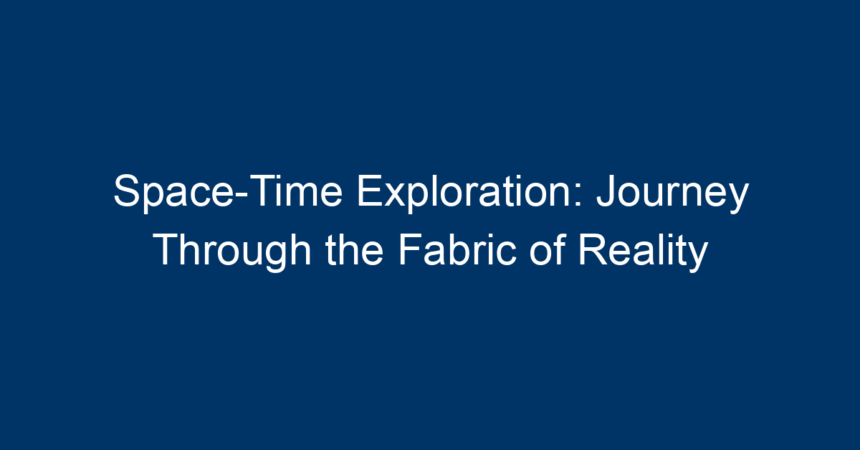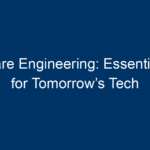Introduction
Imagine a realm where time bends and the universe unfolds like a grand tapestry—a world beyond mere perception, governed by the intricate dance of space and time. Welcome to the concept of space-time exploration! This fascinating intersection of physics and philosophy challenges our understanding of existence, prompting us to ask profound questions: What is time? How do gravitational forces warp space? In this article, we’ll delve into the mesmerizing world of space-time exploration, exploring its origins, key theories, practical implications, and its role in our understanding of the universe.
Understanding Space-Time
The Fabric of Reality
At its core, space-time is a four-dimensional continuum that blends the three spatial dimensions with time as the fourth dimension. This revolutionary concept stems from Albert Einstein’s theory of relativity, which reshaped our understanding of gravitational forces and motion.
Einstein proposed that massive objects—like planets and stars—warp the space around them. This curvature of space-time is what we perceive as gravity. For instance, think of a trampoline with a heavy ball at its center. The fabric dips, creating a well, and small objects rolling nearby are drawn toward the heavier mass. Similarly, planets orbit stars because of the warping of space-time created by stellar masses.
The Impact of Relativity
Einstein’s theory did not merely enhance the scientific narrative; it ignited a transformative era in physics known as the relativity revolution. This pivotal moment initiated a new understanding of cosmic phenomena, from black holes to the expanding universe.
Space-Time in Everyday Life
You might be wondering how space-time affects your daily existence. The answer lies in the Global Positioning System (GPS). Satellites orbiting Earth experience time differently due to their speed and gravitational pull, leading to discrepancies that must be accounted for to maintain precise navigation. This practical effect of space-time exploration underlines its significance beyond theoretical physics.
Theories and Concepts in Space-Time Exploration
Quantum Mechanics and Space-Time
A major frontier in space-time exploration is the interplay between quantum mechanics and general relativity. Quantum physics operates under principles that seem at odds with the fabric of space-time as described by Einstein. For instance, particles exist in probabilistic states that defy classical logic.
Recent developments, such as quantum gravity theories, attempt to bridge these two fields. Concepts like string theory and loop quantum gravity offer fascinating insights into how the universe might function at its most fundamental level, suggesting that space and time may be emergent properties rather than foundational elements.
Black Holes: The Heart of Space-Time Curvature
One of the most captivating phenomena in space-time exploration is the black hole. Formed from the remnants of massive stars, black holes create gravitational wells so dense that not even light can escape. According to the theory of general relativity, black holes warp the fabric of space-time to such an extent that they challenge our understanding of physics.
The event horizon marks the point of no return, and beyond it, the laws of physics as we know them seem to break down. This raises stimulating questions: What happens to information that crosses the event horizon? Can we ever hope to explore a black hole’s interior?
Time Dilation: A Mind-Bending Reality
Another astounding aspect of space-time exploration is time dilation. This phenomenon occurs when objects move at significant fractions of the speed of light or are situated in strong gravitational fields. Time moves slower for those in motion compared to those at rest—an effect confirmed through experiments such as the Hafele-Keating experiment, where atomic clocks flown on airplanes showed discrepancies when compared to clocks on the ground.
The implications of time dilation could redefine our understanding of aging and experience across different frames of reference, making it a tantalizing area of research in both theoretical and practical realms.
Space-Time Exploration in Modern Science
Technological Advancements
Recent technological breakthroughs have fueled space-time exploration. Enhanced observational tools like gravitational wave observatories enable scientists to detect ripples in space-time caused by astronomical events, such as colliding black holes or neutron stars. This astonishing capability expands our cosmic horizons, allowing us to visualize and understand phenomena previously beyond reach.
Space Travel and the Future
As humanity stands on the brink of interstellar travel, space-time exploration becomes even more critical. Proposed technologies, such as the Alcubierre Drive, theorize faster-than-light travel by manipulating the space around a spacecraft. While these ideas remain theoretical for now, they ignite the imagination, prompting discussions about humanity’s future and our place within the cosmos.
The Philosophical Dimensions of Space-Time Exploration
What is Time?
Space-time exploration sparks profound philosophical debates on the nature of time. Is it an absolute entity, existing independently, or is it a human construct shaped by our perceptions? These questions lead to deeper inquiries into consciousness, reality, and the nature of existence itself.
The Concept of the Multiverse
The concept of a multiverse—where multiple universes coexist with different dimensions of time and space—also emerges from discussions on space-time exploration. While still speculative, these ideas challenge conventional understandings, suggesting that our universe might be merely one of countless others.
Practical Implications of Space-Time Exploration
Enhancing Technology and Innovation
Space-time exploration drives technological advancements across various fields. Innovations derived from our understanding of relativity and quantum mechanics fuel advancements in computing, telecommunications, and materials science, offering practical benefits to society.
Expanding Human Knowledge
Engaging with space-time exploration enhances not only scientific literacy but also fosters curiosity and critical thinking. By inspiring the next generation of scientists, engineers, and thinkers, we pave the way for further advances in our understanding of the universe.
Conclusion
The journey through space-time exploration is as thrilling as it is enlightening—a profound expedition that challenges our perceptions and invites us to ponder the mysteries of existence. From understanding the profound implications of black holes to contemplating the nature of time itself, these explorations provide actionable insights for both scientific innovation and philosophical reflection.
As you engage with the wonders of space-time, remember that the quest for knowledge is unending. Whether you are a scholar, a curious mind, or a lifelong learner, embracing the journey to unravel the universe’s fabric can lead to transformative experiences. Explore, question, and wonder—the universe awaits your inquiry!




